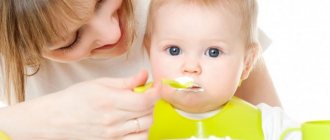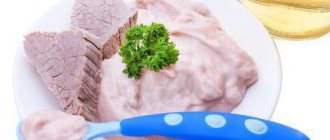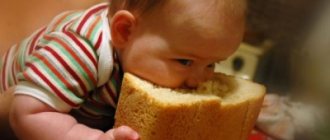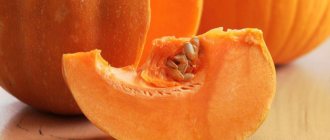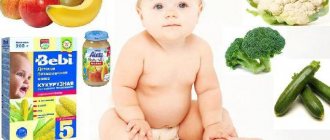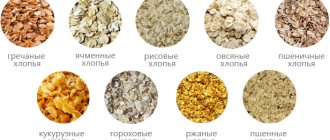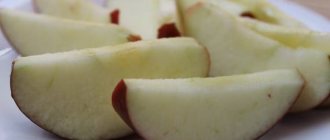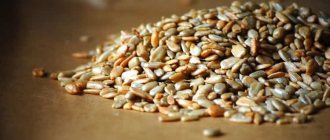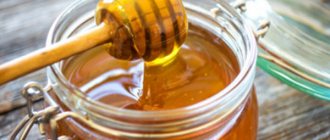Every mother looks forward to the period when she can start giving complementary foods to her baby. With the introduction of vegetables (zucchini, cauliflower, broccoli) and fruits (apples, plums, peaches, pears), many questions do not arise. But when it comes to such an exotic fruit as a banana, mothers begin to wonder at what age they can give it and in what quantity. Let's figure it out.
Composition and benefits of bananas
The fruit contains minerals necessary for the body, trace elements important for the functioning of the body, and amino acids necessary to maintain a good mood.
Banana is rich in iron, biotin, manganese, copper and pantothenic acid. It contains a large amount of fiber, which has a positive effect on intestinal motility.
Banana contains the highest amounts of the following nutrients:
- silicon - 30 mg;
- potassium - 348 mg;
- magnesium - 27 mg;
- vitamin K - 348 mg;
- vitamin B6 - 0.38 mg;
- vitamin C - 10 mg.
The fruit will help make your baby calmer and reduce irritability. Regular consumption helps strengthen bones, increase hemoglobin levels, normalize heart function, improve the functioning of the gastrointestinal tract and strengthen the general condition of the body.
A banana has 21 grams of carbohydrates, 19 of which are sugars and 2 are starches, 1.5 grams of protein, 0.5 grams of fat and 74 grams of water. This composition saturates the child well and makes banana a convenient snack.
General brief characteristics of banana as a complementary feeding product
Banana has a pronounced sweet taste and pleasant consistency, so almost all children like it. This tropical fruit is rich in various beneficial substances that have a positive effect on the baby’s health and help him develop fully:
- Vitamins B, C. They have a beneficial effect on the baby’s nervous system and improve his sleep.
- Folates (folic acid compounds). Necessary for the normal development of the nervous system, mental functions, immunity, and maintenance of blood circulation.
- Minerals. Among them there is especially a lot of potassium. It is extremely important for the proper functioning of the heart, muscles, and brain. Bananas are also rich in silicon, magnesium, iron, sodium, manganese, and copper.
- Amino acids (almost all necessary for humans). Very important for the synthesis of enzymes, hormones, and restoration of damaged tissues.
- Natural antacids. Prevents erosive damage to the gastrointestinal tract and helps prevent heartburn.
- Serotonin (hormone of joy). The sweet fruit improves mood, helps overcome stress, childhood whims, and insomnia.
- Antioxidants (slow down oxidative processes in the body).
- Cellulose. Positively affects digestion.
- Starch. In the body, it is converted into glucose, necessary for the development of the baby and providing him with energy.
Bananas are rich in vitamins, microelements and other valuable substances
As for the nutritional value of the fruit, 100 g of it contains 1.5 g of proteins, 21 g of carbohydrates, 0.5 g of fat. Banana is perhaps the most high-calorie fruit (100 g contains 91 kcal): it is second only to avocado (212 kcal).
Since in our country the exotic avocado is a rarity on the table of most families, everyone considers the banana to be the most nutritious and high-calorie fruit.
In our country, banana is considered the most high-calorie fruit (considering that avocados are rarely consumed in Russia)
Due to its high calorie content, banana complementary feeding is ideal for a baby who is not gaining weight well. And vice versa, if the baby is overly plump, the mother should not rush to introduce the fetus into the diet or offer it occasionally, in limited quantities.
A high-calorie banana will be especially useful if you are underweight, but if your baby is too plump, it is better not to indulge in the sweet fruit.
It is important that bananas do not contain gluten (a special substance, a type of protein that is difficult for a child’s incompletely formed gastrointestinal tract to digest until a certain age).
Effect on digestion and stool
Banana, like any other product, has a certain effect on children's stool. Although the fruit contains fiber and pectin, which in themselves help cleanse the digestive tract and normalize stool, due to the high content of starch and other substances, the banana still has a fixing effect. And if you give it to your child incorrectly, in large quantities, then constipation is possible.
In addition, if the child suffers from colic, then this fruit can aggravate the problem (again, the likelihood of this increases when banana is introduced into complementary foods too early or immediately given in large portions).
Allergenicity degree
In general, banana is a product with a low probability of allergies, but the occurrence of an undesirable reaction cannot be completely excluded. Sometimes, after eating fruit, a rash may appear on the child’s skin (most often due to overeating): it goes away quickly, but further food experiments with the fruit will have to be postponed for some time.
In some cases, the cause of allergies is not the banana itself, but the chemicals that are used to treat the fruit to improve its presentation. For this reason, it is better to shop for baby food in trusted stores and supermarkets (where all products must be certified).
The banana, which grows only in tropical countries with a humid climate, has been part of the diet of modern young mothers and fathers since early childhood. Therefore, the fruit is not genetically alien to the baby’s body, like, for example, kumquat or passion fruit. Meanwhile, some people are allergic to latex: in this case, the likelihood that their child will have an intolerance to banana is increased.
Video: beneficial properties of banana (Elena Malysheva’s TV program “Live Healthy!”)
At what age and in what form can it be given?
Each family individually decides at what time to introduce complementary foods. Main landmarks: the emergence of food interest and the extinction of the instinct to push food out with the tongue. But you shouldn’t rush into complementary feeding and start earlier than 5-6 months.
It is also advisable to wait until the first tooth appears and the child is able to sit independently. It is better to give bananas from 7 months and not in the evening. The fruit takes a long time to digest by the stomach and can prevent the baby from falling asleep.
The first banana feeding is given heat-treated and mixed until smooth with breast milk or formula for better absorption
You can prepare it as follows:
- Remove peel and long fibers.
- Cut into small circles and steam.
- Add a small amount of mother's milk or adapted formula.
- Beat with a blender until smooth.
There is no need to do heat treatment and homogenization every time the baby wants a banana. 2-3 times are enough for the child’s stomach to get used to the new food and begin producing the appropriate enzyme. The amount of the first serving should not exceed half a teaspoon.
At the beginning of complementary feeding, you can give banana in the form of puree or from a special device for complementary feeding - a nibbler. The soft fruit allows you to chop it even with a fork, and in a nibbler it will be convenient for an infant to try to chew it with his gums. Up to 9 months, it is better not to give more than 3 tablespoons of puree at one meal.
To start complementary feeding, puree can be mixed with already familiar fruits and vegetables.
Kids will love the combination with a sour apple, pear or pumpkin. If you want to purchase ready-made puree, you should pay attention to the following:
- the composition does not contain sugar or preservatives;
- appropriate age labeling;
- When opening the jar there is a popping sound.
Once opened, the puree can be stored in the refrigerator for 24 hours. For children under one year old, it is better to buy small jars: the first portions are extremely small, and most of the puree will remain uneaten. When choosing, you should pay special attention to the manufacturer and expiration date.
When the baby has mastered the crushed fruit, it is worth moving on to eating it whole. It is recommended to give a banana to a child closer to 9-10 months. It is better to start with half and under the supervision of parents.
A one-year-old baby can easily eat a whole fruit.
Fresh banana or factory puree?
It's up to you to feed your baby a banana from a jar or make puree at home. It all depends on your convenience, workload and ability to purchase ripe, high-quality fruits.
Both factory-made and homemade purees have their advantages and disadvantages. Factory jarred puree:
- has an ideal, age-appropriate consistency;
- manufacturers additionally enrich the product with vitamins;
- fresh high-quality bananas are used in production;
- you can always check expiration dates;
- jarred puree can be stored for a long time;
- When you start introducing the baby into the diet, you will buy a one-component puree, then you can choose a banana combined with other fruits or cottage cheese.
Homemade puree from fresh fruits requires careful selection of bananas in the store: the peel should be uniformly yellow, and the pulp itself should be uniform and without brown spots. But this cooking option will give you confidence in the quality of food for your baby - you will know exactly the composition of the dish. In addition, homemade puree will cost you many times cheaper than its factory-made counterpart.
How to introduce it into the diet
Banana is a sweet fruit and it is not recommended to introduce it first into a child’s diet. It is better to start complementary feeding with vegetables, continue with cereals and unsweetened fruits. After that it's the banana's turn. This sequence is important so that the child does not give up other tastes in favor of sweets.
According to the rules of complementary feeding, no more than one new product is given per day
You should not introduce unusual foods during illnesses, vaccinations and stressful situations. It is better to start with a small piece, offering the fruit in the first half of the day. This will allow you to more accurately track potential consequences for the body.
From what month can you give a banana to a baby?
It is very difficult to say exactly from how many months a baby can be given a banana. However, according to pediatricians and children's nutritionists, the optimal time to introduce this fruit into the diet is the time when the child is already 8-9 months old. Moreover, the type of feeding - formula or breast milk - does not play any role here.
Under no circumstances should bananas be given to children under 6 months of age. And no matter how much a mother would like to please her baby with something delicious, this exotic fruit at this age can cause a lot of harm to the baby’s digestion.
Possible adverse reactions
Banana is a hypoallergenic fruit and rarely causes adverse reactions in the body. In case of individual intolerance or too rapid introduction to complementary foods, the following may occur:
- diarrhea;
- allergic rash;
- flatulence.
Nausea in a child
Adverse reactions may not be due to the fruit itself, but due to harmful fertilizers on the plantation and chemical treatment of already collected fruits to allow for long-term transportation. If you have unpleasant symptoms, you should give up the fruit for 2 weeks.
Then try to offer it to the child again and observe whether a full return to the diet is possible.
Cons of bananas
At the same time, if a banana is introduced into the diet of a child under one year old too early, it can cause digestive disorders, which will result in constipation. In addition, this fruit should not be offered to children who suffer from constipation. In this case, it is best to try this exotic product for the first time after the child turns one year old.
As for allergies to this food product, they occur very rarely, but they do occur. Therefore, it is necessary to introduce banana into the diet of a child up to one year old very slowly and carefully, carefully monitoring his reaction. If you experience a rash, constipation, or other unusual reactions from the body to the introduction of this complementary food, you should immediately consult a doctor.
From a botanical point of view, banana is a berry, polyspermous and thick-skinned.
And finally, banana is one of the most high-calorie fruits. Therefore, in the diet of children who are prone to gaining excess weight, their quantity should be strictly limited.
Limitations and frequency of use
High nutritional value and rich composition allow you to give your child a banana every day in moderation. A good solution would be to replace cookies and candies with sweet desserts with banana or give it fresh. For babies under one year old, the daily portion should not exceed half a fruit.
There are a number of cases when it is better to reduce the consumption of soft fruits. High calorie content and large amounts of sugar can negatively affect children who are prone to or have the following diseases:
- diabetes;
- increased blood glucose levels;
- overweight.
For other diseases, it is recommended to completely eliminate bananas from the menu:
- heart disease;
- thyroid diseases;
- epilepsy;
- pathologies of the skeletal system.
It is also not recommended to give your child a banana before the main meal. Natural sweetness may negatively affect appetite
Benefits of fruit
Banana is a nutritious and tasty food. This is the only exotic fruit that can be included in the diet of babies. It satisfies hunger, saturates the child's body with vitamins, minerals and elements. Can replace one full feeding. Banana can be offered to babies as a dessert.
The calorie content of the fruit is 95 calories (per 100 g).
Beneficial substances contained in bananas:
- vitamin A (carotene) - has a beneficial effect on vision;
- vitamin B6 (adermine) - stimulates the formation of the pleasure hormone (serotonin);
- vitamin C (ascorbic acid) - improves immunity;
- vitamin E (tocopherol) - helps in the absorption of vitamins A, D by protein, fats;
- potassium - ensures the vital activity of all soft tissues;
- magnesium - regulates the functioning of internal organs;
- iron - increases the level of hemoglobin (a protein that exchanges oxygen and carbon dioxide between tissues, lungs) in the blood;
- phosphorus - responsible for the growth of bone tissue and teeth;
- starch is a source of glucose (energy), helps normalize stool;
- fiber - normalizes intestinal function.
In addition to the above properties, banana is a natural prebiotic that promotes the creation of beneficial microflora in the intestines. It also helps to endure physical and mental stress more easily.
Is it possible to eat a banana if you have diarrhea?
Due to the large amount of starch, fresh banana has a strengthening effect on the intestines. If a child has a tendency to loose stools that is not associated with illness, eating a small amount of fruit can help correct the situation. You need to choose only ripe yellow fruits.
In case of diarrhea due to rotavirus infection or poisoning, banana should be excluded from the diet. A fruit that is difficult to digest will increase the load on the gastrointestinal tract. A weakened stomach is unlikely to be able to digest it, which can lead to increased diarrhea.
Once symptoms are relieved, banana can be administered to speed up the body's recovery and maintain hydration. It will accelerate the growth of intestinal flora and help the healing of the mucous membrane.
Is it possible or not?
Is it possible to give a banana to a child? What are the benefits of this fruit? If the child is an infant, how much does he need? When can a child have a banana? Will such complementary feeding harm a 4-month-old baby? Such questions related to additional food for infants are often asked by young parents.
Based on the experience of specialists, it should be noted that many do not adhere to strict limits for the introduction of complementary foods. This product has a structure that is very suitable for making purees. You can introduce it into your baby’s diet as early as 4 months, but this should be done with caution.
The optimal age for a child to receive banana as complementary food is 7-8 months.
How to choose the right fruit
When purchasing, you should focus on the color and degree of ripeness of the fruit:
- Green fruits are unripe. They contain the least sugar and 87 kcal per 100 grams of weight. They contain a lot of tannin, which causes fermentation in the stomach. It is better not to give this fruit to small children to avoid flatulence and discomfort in the stomach.
- Bananas with dark spots are overripe. The most high-calorie fruits are high in glucose and fructose. Black spots on the skin may indicate mold damage. They should also be protected from the children's table.
- Yellow, evenly colored and ripe fruits. These bananas are moderately sweet and have an energy value of 95 kcal. They are considered suitable for a child.
Fruits are not intended to be stored in the refrigerator or packaged. Bananas should be left in a cool and dark place. Storing close to other fruits, especially apples, can speed up the ripening process of green fruits.
When you can't eat
It is not always possible to diversify a baby’s diet with fruit. Bananas can be given to infants on a limited basis in the following cases:
- there are signs of problems with the digestive tract, such as constipation, diarrhea, colic;
- there is a lot of sugar in the newborn’s blood, which may indicate diabetes;
- there are signs of spasm of the muscular system (in this case, eating a banana in a child may increase hypertonicity);
- before the upcoming feeding, so as not to interrupt your appetite.
When deciding when a child can be given bananas, it is worth considering contraindications. With them, fruit is completely excluded from the diet. These include:
- heart defects, problems with heart valves and other severe lesions in the cardiovascular system;
- brittle bone syndrome, as well as the already high calcium content in the child’s body;
- problems with the thyroid gland (both hyper- and hypothyroidism can be a reason for exclusion);
- some neurological diseases (seizures, epilepsy, fainting, etc.).
Since a banana can cause an allergy in a baby, despite all its hypoallergenic properties, children with such reactions are also not given the fruit. The development of an allergy to banana in an infant is another strict contraindication.
Cooking recipes
There are many ways to use banana in cooking. Simple recipes that do not require extra effort in the kitchen are suitable for the little ones. Older children will appreciate the pastries and desserts.
Curd dessert
Ingredients:
- cottage cheese - 150 gr;
- yogurt - 100 g;
- banana - 1 pc.
To prepare, you will need to cut the banana into pieces, put all the ingredients in a blender bowl and beat until smooth.
Serve in small bowls or bowls.
Oatmeal
Ingredients:
- oatmeal - 40 g;
- milk - 100 g;
- banana - ½;
- water as needed.
Preparation:
- Boil oatmeal in milk with added water.
- Mash the banana with a fork.
- Mix the finished flakes with the puree.
Decorate, depending on the child’s age, with cinnamon, coconut or cocoa.
Banana bread
Ingredients:
- eggs - 1 piece;
- flour - 250 gr;
- butter - 40 g;
- sugar - 40 g;
- bananas - 2 pcs;
- soda - ⅓ teaspoon.
Preparation:
- Grind bananas until pureed.
- Melt butter and mix with puree and soda.
- Add flour, sugar.
- Pour the dough into the mold and bake for 45 minutes at 180 degrees.
Helpful cooking tips
Thanks to their viscous pulp, bananas will help out the housewife in the absence of many ingredients. You should only use fruit crushed into puree and when preparing sweet dishes. You can try replacing the following ingredients in the recipe:
- eggs for ½ banana;
- part butter for an equal amount of puree;
- some sugar when baking pies and brownies.
If the skin of the fruit has turned black, it is used only for preparing dishes that require heat treatment. High temperatures kill the fungus that has infected the fruit, and high sweetness comes in handy in baking
